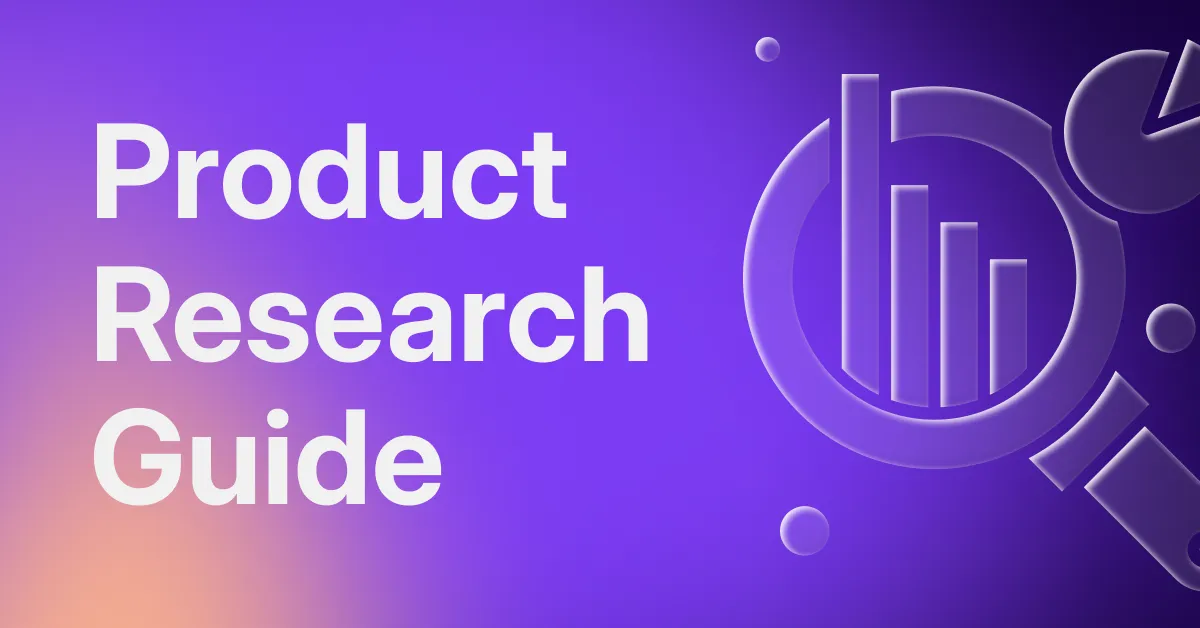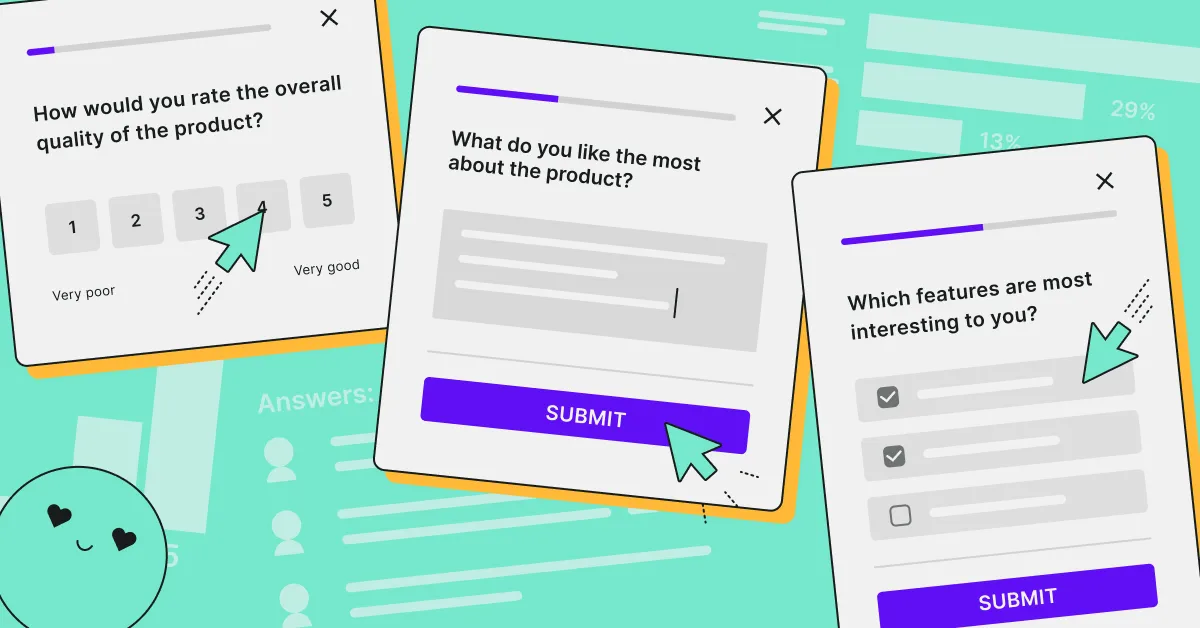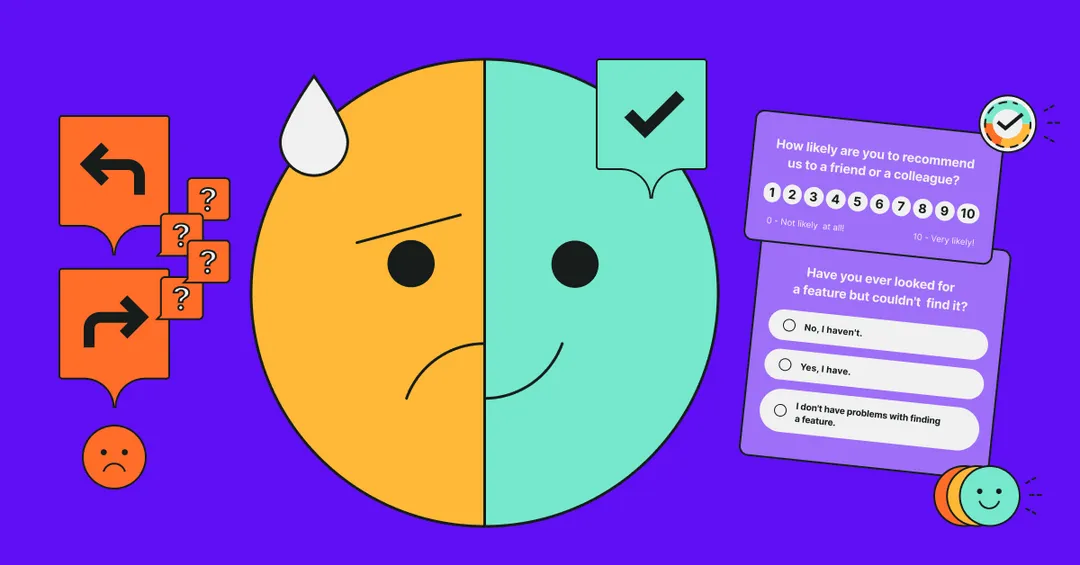Product validation is about getting up close and personal with the future of your idea. It's asking, "Will people love this as much as I do? Does it solve a problem? Or will I just waste time and budget?"
This process isn't just a hurdle; it's your safety net. It ensures that when you're ready to leap with your idea, you're not just taking a shot in the dark—you're aiming for the stars with a map in hand. So, let's dive into how making product validation your best buddy can transform that spark of yours into a beacon of success.

Product Validation Fundamentals
Product validation is the cornerstone of product development, ensuring the end product meets user needs and market demands. It requires robust testing and feedback mechanisms.
The method consists of several important steps, throught user research and concept testing to understand the needs and expectations of the target audience with market research. Prototyping and usability testing follow, allowing designers and developers to fine-tune the product's features and functionality for winning product ideas. Market analysis provides insights into the competitive landscape, helping to position the product effectively. Quality assurance ensures the product meets certain standards of performance, while regulatory compliance verifies that the product adheres to industry-specific legal requirements.
Pilot testing and beta testing offer a small-scale production run to identify any final tweaks before the official launch. The culmination of product validation is the preparation for a product launch, solidified by the ability to interpret data effectively to make informed decisions. This systematic approach ultimately delivers a well-rounded and market-ready product.
Definition and Purpose
Product validation is the process of testing a product to ensure it accomplishes its intended purpose and meets the target audience's needs. The purpose of product validation is to ensure your great idea is ready for the market by identifying and fixing issues, thus minimizing the risk of product failure.
Types of Product Validation
There are several types of product ideas validation, each focusing on different aspects of the product, its lifecycle and business model
- Concept Validation: Tests the product ideas to determine its feasibility and desirability before significant resources are invested.
- Usability Testing: Measures the ease with which end users can use the product and provide feedback for improvements.
- Beta Testing: This involves releasing the product feature to a limited number of users from the target audience to catch any bugs or issues not found during in-house testing.
- A/B Testing: Compares two versions of a product ideas to determine which one performs better based on specific metrics.
- Compliance Validation: Ensures the product ideas meets all industry standards and regulations.
Each type plays a critical role in making sure that the product ideas not only functions as intended but also aligns with customer expectations and addresses user pain points.
Let's break down product validation into several steps.
Step 1. Planning and Strategy
When validating a product, it is crucial to align the validation process with the strategic vision of the product. This section explores the establishment of clear objectives and the metrics used to measure success.
Establishing Goals
Goals provide direction and purpose for product validation efforts. Successful planning begins with defining specific, measurable, attainable, relevant, time-bound (SMART) goals. They might include validating product-market fit, measuring user engagement, testing specific features identifying market demand or testing business model.
- Example Goal: Achieve a product-market fit with a user retention rate of over 50% within six months.
Determining Key Performance Indicators
Key Performance Indicators (KPIs) are quantifiable measurements that reflect the critical success factors of a product. Choosing the right KPIs ensures focus on relevant metrics that influence decision-making in product validation process.
KPI Description Target Active User Growth Percentage increase in active users. > 20% Customer Satisfaction Average rating provided by customers. > 4.5/5 Conversion Rate Ratio of visitors who take desired action. > 5%
- Example KPI: A monthly increase in active users by at least 20% indicates successful user acquisition.
Step 2. User Research
User Research is central to understanding the needs and behaviors of potential customers and involves direct engagement to gather actionable data.
Identifying Target Audience
One must first define who they are creating the product for. This involves segmenting the market into specific demographics, psychographics, and behaviors to identify the ideal user profile. Profiling may include:
- Demographics: Age, gender, income, education
- Psychographics: Interests, values, lifestyles
- Behaviors: Usage patterns, brand interactions, purchase habits
User Interviews and Surveys
User interviews and surveys are tools to gather qualitative and quantitative data directly from the defined target audience. They should be structured to uncover user needs, pain points, and preferences.
- User Interviews: Conduct one-on-one sessions to deeply understand individual user perspectives.
- Methods: In-person, video calls, phone calls.
- Focus areas: Personal experiences, detailed feedback.
- Surveys: Distribute questionnaires to a broader audience to identify patterns and statistics.
- Formats: Online forms, email questionnaires, in-app surveys.
- Questions: Closed-ended for quantitative analysis, open-ended for qualitative insights.
Utilizing a list format can clarify the types of questions to ask:
- What features do you value the most in [Product Category]?
- How often do you use [Product Category]?
- On a scale of 1-10, how satisfied are you with [Current Solution]?

Market Analysis and competitive landscape
In product validation, market analysis examines the environment where a product will compete. It identifies potential customers and evaluates direct and indirect competitors. For this step, you can evaluate similar product ideas available on the market, analyzing social media and Google trends and use tools to collect feedback from your target audience.
Market Demand Assessment
Assessing market demand for product ideas involves quantifying the interest in a product and predicting sales volume. Two essential steps in this process are:
- Customer Segmentation: Define groups of potential customers by characteristics such as age, location, and buying habits. Before taking this step, make sure you understand the target market.
- Demand Forecasting: Estimate the size of each segment and the rate at which they are likely to purchase.
This can be done through surveys, analysis of secondary data, or trend analysis. It is important to use reliable data sources to ensure that predictions are accurate, reflect real market opportunities and provide valuable insights.
Competitive Landscape
The competitive landscape is critical for understanding where a product stands in comparison to others. Companies should conduct market research, identify their main competitors and categorize them according to their market share and product offerings.
- Direct competitors: Those use similar product ideas or services
- Indirect competitors: Those offering alternatives that could satisfy the same customer needs and pain points
A SWOT analysis (Strengths, Weaknesses, Opportunities, Threats) can be effective in examining competitors in relation to one's own product.
Step 3. Prototype Testing
In Prototype Testing, companies evaluate early versions of their products to gather actionable insights and refine their design. It is an essential stage in product development that ensures functionality, usability, and overall value to the target audience.
Prototyping Methods
Prototyping involves creating a functional representation of a product to test various aspects of its design. The methods used can vary based on the product type and the testing goals. Two common prototyping methods are:
- Low-Fidelity Prototyping: This method usually includes paper models or simple digital representations. It's fast and cost-effective, focusing on outlining product concepts and testing basic functionality without detailed aesthetics. Advantages of this method: Quick to produce, low cost, easy to modify. Limitations: Not suitable for detailed UX analysis, may not represent the final look, limited interaction.
- High-Fidelity Prototyping: Contrary to low-fidelity, these prototypes are more detailed and interactive, often resembling the final product more closely. They are useful for detailed user experience (UX) testing and can be created using software tools like Adobe XD or Sketch. The advantages of thise methods are detailed representation, more accurate user feedback and interactive features. When it comes to disadvantages, we have to consider more time consuming creation, higher cost and lower flexibility to changes.
Feedback Collection and Analysis
Once prototypes are developed, collecting and analyzing user feedback is critical.
- Surveys and Questionnaires: Short, structured forms can be used to collect quantitative data on user impressions, usability, and satisfaction levels.
- User Interviews: These involve one-on-one sessions with users to gather more in-depth qualitative feedback.
- Usability Testing: Observing users interacting with the prototype to identify any obstacles or confusion in the user experience.
The feedback must be methodically analyzed to identify patterns and key insights. Data can be categorized into themes such as:
- Usability issues: Challenges or frustrations users faced.
- Feature requests: Additional functions or changes users suggest.
- General impressions: Overall user sentiment towards the product.
Using tools like affinity diagrams or feature matrices can aid in organizing and prioritizing the feedback, which guides the next iteration of prototyping and development.
Step 4. Usability Testing
Usability testing critically assesses how easy a product is to use by its intended users. In product validation process, it focuses on measuring a product's capacity to meet its intended purpose.
Test Design
When designing a usability test, it is vital to establish clear objectives for new ideas. They typically aim to evaluate a product's effectiveness, efficiency, and satisfaction. The design involves selecting appropriate tasks for participants to perform, determining success criteria for each task, and crafting a detailed test plan. A well-structured test design ensures that the test is focused and yields actionable insights.
Tasks: The chosen tasks should mirror real-world use cases that are relevant to the product's typical user base.
Success Criteria: Criteria may include task completion rate, accuracy, and the time taken to complete tasks.
Execution and Reporting
Execution entails recruiting participants that represent the product's user demographic and administering the test under controlled conditions to minimize variables that could affect the results. During the test, observers usually take detailed notes and may employ screen recording tools to capture user interactions.
Participant Observation: Observers note any difficulties or errors encountered by participants, as well as the parts of the product that are particularly user-friendly.
After executing the test, reporting involves analyzing the data gathered and summarizing the findings in a structured report. This report often includes statistical data, direct quotes from participants, and visual elements such as heatmaps or user journey maps to illustrate points of interest.
Reporting Format to validate product ideas:
- Quantitative Data: Tables and graphs are used to present metrics like task completion rates and times.
- Qualitative Feedback: Participant quotes and video highlights provide insight into user experience challenges.

Step 5. Quality Assurance
Quality assurance in product validation is fundamental to ensuring a product meets specified requirements and user expectations. This process involves rigorous testing and systematic tracking of any identified issues.
Test Cases and Scenarios
To ensure comprehensive testing of product idea, test cases should be derived from both functional and non-functional requirements. A test case outlines specific conditions under which a product ideas test will be conducted, including the input data, execution steps, and the expected outcome. It's essential to also develop test scenarios, which are high-level concepts that map out the broader functionality being tested.
The creation of these frameworks helps testers cover all aspects of the product's capabilities and capture any functional discrepancies.
Step 6. Pilot Testing and Beta Testing
Pilot testing and beta testing are critical phases in product idea validation. They involve beta testing with a select group of early adopters to gather feedback on product ideas for functionalities and usability.
Beta Testing with Early Adopters
Beta testing with early adopters exposes the product to real-world users and environments. Feedback from this phase is imperative for identifying unforeseen problems and areas for improvement.
- Selection of Participants: Carefully choosing users that represent the target market. That the most reliable way to identify winning product ideas.
- Feedback Mechanisms: Establishing clear channels for testers to report their experiences, such as surveys, interviews, and usage data analytics.
The insights gained here can significantly impact the final product's functionality, design, and user satisfaction.
Step 7. Data Interpretation and Decision Making
In product idea validation, effective data interpretation and decision-making determine the most accessible product ideas and guide its development lifecycle.
Analyzing Test Results
Test results provide quantitative and qualitative data crucial for understanding product performance. Charts, such as bar graphs or line plots, should be deployed to visualize the success or failure rates, highlighting areas that meet the expected criteria and those that fall short. Metrics such as user engagement levels, load times, and bug frequency offer tangible insights. For instance:
- User Engagement: 85% utilization rate in target demographic.
- Load Times: Average of 2.5 seconds, exceeding the 3-second optimal maximum.
- Bug Frequency: 5 critical bugs per 100 uses, surpassing the target of less than 2.
A balance between statistical significance and user feedback is essential in triangulating the results.
Iterative Improvements
Once the data has been analyzed, it should inform iterative improvements. A priority matrix can be employed to decide which features or issues to tackle first based on impact and effort.
- High Impact, Low Effort: Immediate actions for quick wins.
- High Impact, High Effort: Schedule for future updates with careful planning.
- Low Impact, Low Effort: Consider for inclusion if resources allow.
- Low Impact, High Effort: Typically avoid or postpone.
Adjustments are then made to the product, followed by retesting to measure the effects. Test cycles continue until the product aligns with the predetermined success metrics. Priority matrix can let you to prioritize product ideas most beneficial for your business model.
Step 8. Product Launch Preparation
After selecting the most significant product idea and Proper preparation for a new product idea launch is crucial. It ensures that the product is ready for market and that the launch efforts are well-scheduled. This requires to align product development with marketing campaigns.
Final Validation Checklist
A Final Validation Checklist ensures that the product meets all the specifications and requirements before the launch. This checklist should include:
- Product Quality: Confirm the product functions correctly and is free from defects.
- Compliance: Verify the product adheres to all relevant industry standards and regulations.
- Market Readiness: Ensure packaging, branding, and marketing materials are complete.
- Inventory Levels: Check that adequate stock is available to meet anticipated demand.
- Support Systems: Test customer support channels and service readiness.
Launch Timeline Planning
The Launch Timeline Planning outlines key dates and milestones leading up to the product release. A strategic timeline have to include developing the product, marketing assets and campaign strategy, soft launch and official launch.
- Soft Launch: A smaller, controlled release to gather early user feedback on new product idea.
- Official Launch: The full-scale public release of the product idea.
Check out our comprehensive guide for a complete product launch checklist.
Summary
Product validation is an essential step in the development process, ensuring that product ideas meet the needs and preferences of target customers. It involves the testing of digital products, among others, to confirm they hold value in the market. Employing various strategies, such as customer interviews, surveys, and prototype testing, are best practices for efficient validation.
Crucial components for product idea validation are product-market fit (market research, google trends, value proposition, competitive landscape research), customer engagement (user interviews, focus groups, surveys), prototyping (building MVP for initial user testing), iterative feedback (refining product ideas and improving the product or features based on feedback from target audience), data analysis (analyzing feedback, product usage to prioritize product ideas on next improvement)
Incorporating these best practices ensures that product ideas are well-suited to meet the demands of the intended audience and have a better chance of success in the competitive market.
Key takeaways:
- Identify Customer Needs: Engaging with potential customers is crucial. Their feedback ensures the product concept aligns with market demands.
- Prototype Early: Creating a functional prototype of a digital product allows for early user interaction, garnering valuable insights into its usability and appeal.
- Iterative Testing: Validate iteratively, refining the product with each cycle based on user experience feedback.
- Quantitative and Qualitative Data: Leveraging both types of data provides a holistic view of the product's viability













.webp)
.webp)
.svg)

.svg)



